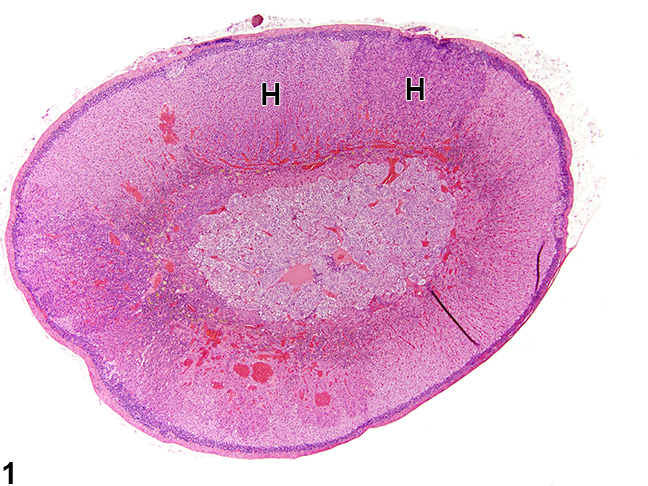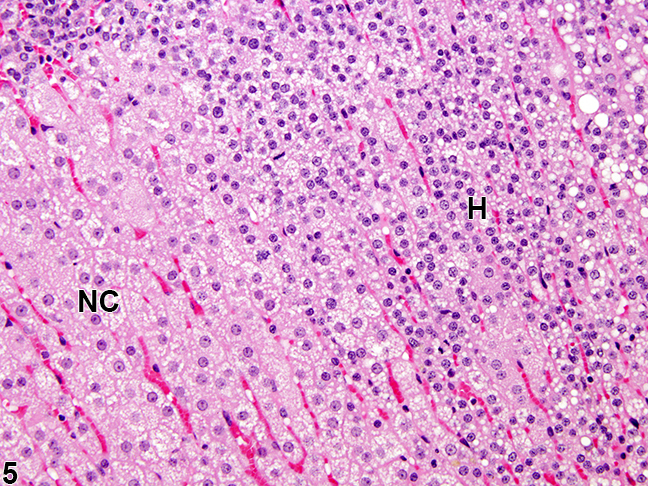17 alpha-hydroxylase deficiency pathophysiology
|
17 alpha-hydroxylase deficiency Microchapters |
|
Differentiating 17 alpha-hydroxylase deficiency from other Diseases |
|
Diagnosis |
|
Treatment |
|
Case Studies |
|
17 alpha-hydroxylase deficiency pathophysiology On the Web |
|
American Roentgen Ray Society Images of 17 alpha-hydroxylase deficiency pathophysiology |
|
Risk calculators and risk factors for 17 alpha-hydroxylase deficiency pathophysiology |
Editor-In-Chief: C. Michael Gibson, M.S., M.D. [1]; Associate Editor(s)-in-Chief: Mehrian Jafarizade, M.D [2]
Overview
17 alpha-hydroxylase deficiency is an uncommon form of congenital adrenal hyperplasia resulting from a defect in the gene CYP17A1, which encodes for the enzyme 17 alpha-hydroxylase and 17,20-lyase. 17 alpha-hydroxylase deficiency is transmitted in an autosomal recessive pattern. Mineralocorticoid excess and lack of androgens are two main features in this disease.
Pathogenesis
- CYP17A1 gene defects can cause two type of enzyme deficiencies: 17α-hydroxylase enzyme deficiency and 17,20-lyase deficiency. The dual activities mediate key transformations in cortisol and sex steroid synthesis:
- 17α-hydroxylase mediates the pathway: pregnenolone → 17-hydroxypregnenolone, also progesterone → 17-hydroxyprogesterone.
- 17,20-lyase mediates pathway 17-hydroxypregnenolone → Dehydroepiandrosterone, also 17-hydroxyprogesterone → androstenedione.
- Mineralocorticoid excess is the major clinical clue distinguishing the 17α-hydroxylase deficiency from the 17,20-lyase deficiency, which only affects the sex steroids.
- In 17 alpha-hydroxylase deficiency, steroid biosynthesis will be limited to progesterone, 11-deoxycorticosterone (DOC), and corticosterone.
- 11-deoxycorticosterone (DOC) binds to the mineralocorticoid receptor and its excess amounts in 17 alpha-hydroxylase deficiency causes aldosterone effects such as volume expansion, hypertension, and hypokalemia. Also, 11-deoxycorticosterone (DOC) effects will suppress renin and aldosterone production.
- The most important features of 17 alpha-hydroxylase deficiency include hypertension, hypokalemia and sexual infantilism.
- Hypertension and hypokalemia result from accumulation of cortisol precursors, that have mineralocorticoid characteristics.
- Sexual infantilism results from the inability of adrenal cortex to synthesize androgens and estrogens.[1][2][3][4][5]

Genetics
- 17 alpha-hydroxylase deficiency is an inherited disease with an autosomal recessive pattern, which means both copies of the gene in each cell have gene mutations.
- Commonly, the parents of an individual with an autosomal recessive condition each carry one copy of the mutated gene, but they typically do not show signs and symptoms of the condition.[7]
Associated Conditions
Gross Pathology
Gross pathology findings in patients with 17 alpha-hydroxylase deficiency are:[8][9]
- Enlarged adrenal glands
- Wrinkled surface adrenal glands
- Cerebriform pattern adrenal glands (pathognomonic sign)
- Normal ultrasound appearances may also be seen
- Testicular masses may be identified representing adrenal rest tissue

Microscopic Pathology
In 17 alpha-hydroxylase deficiency microscopic findings may include:
- Diffuse cortical hyperplasia with smaller cells
- The cell cytoplasm can be vacuolated, and often more basophilic
- Rare mitotic figures may be present
- The hyperplastic cells typically lack features of cellular atypia[10]

References
- ↑ Kater CE, Biglieri EG (1994). "Disorders of steroid 17 alpha-hydroxylase deficiency". Endocrinol. Metab. Clin. North Am. 23 (2): 341–57. PMID 8070426.
- ↑ Heremans GF, Moolenaar AJ, van Gelderen HH (1976). "Female phenotype in a male child due to 17-alpha-hydroxylase deficiency". Arch. Dis. Child. 51 (9): 721–3. PMC 1546244. PMID 999330.
- ↑ Auchus RJ, Lee TC, Miller WL (1998). "Cytochrome b5 augments the 17,20-lyase activity of human P450c17 without direct electron transfer". J. Biol. Chem. 273 (6): 3158–65. PMID 9452426.
- ↑ Griffing GT, Wilson TE, Holbrook MM, Dale SL, Jackson TK, Ullrich I, Melby JC (1984). "Plasma and urinary 19-nor-deoxycorticosterone in 17 alpha-hydroxylase deficiency syndrome". J. Clin. Endocrinol. Metab. 59 (5): 1011–5. doi:10.1210/jcem-59-5-1011. PMID 6332824.
- ↑ Simsek E, Ozdemir I, Lin L, Achermann JC (2005). "Isolated 17,20-lyase (desmolase) deficiency in a 46,XX female presenting with delayed puberty". Fertil. Steril. 83 (5): 1548–51. doi:10.1016/j.fertnstert.2004.11.063. PMID 15866602.
- ↑ "File:Adrenal Steroids Pathways.svg - Wikimedia Commons".
- ↑ Hannah-Shmouni F, Chen W, Merke DP (2017). "Genetics of Congenital Adrenal Hyperplasia". Endocrinol. Metab. Clin. North Am. 46 (2): 435–458. doi:10.1016/j.ecl.2017.01.008. PMID 28476231.
- ↑ Congenital adrenal hyperplasia. Dr Henry Knipe and Dr M Venkatesh . Radiopaedia.org 2015.http://radiopaedia.org/articles/congenital-adrenal-hyperplasia
- ↑ Teixeira SR, Elias PC, Andrade MT, Melo AF, Elias Junior J (2014). "The role of imaging in congenital adrenal hyperplasia". Arq Bras Endocrinol Metabol. 58 (7): 701–8. PMID 25372578.
- ↑ 10.0 10.1 10.2 "Adrenal Gland - Hyperplasia - Nonneoplastic Lesion Atlas".